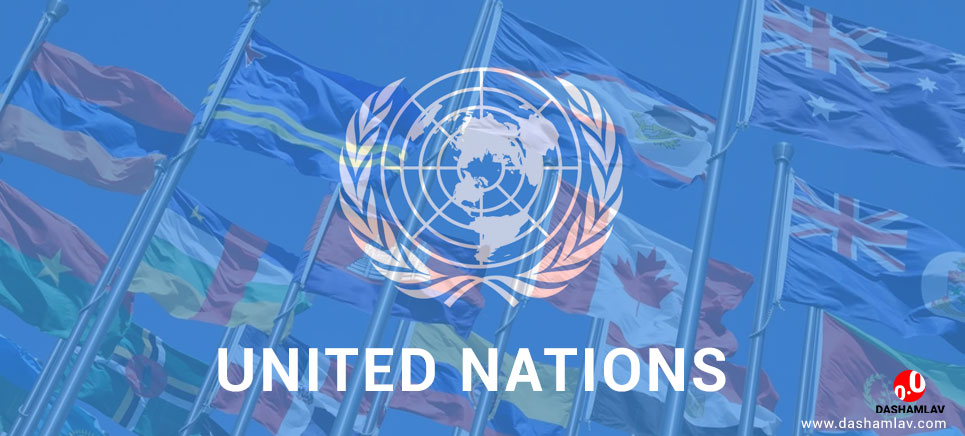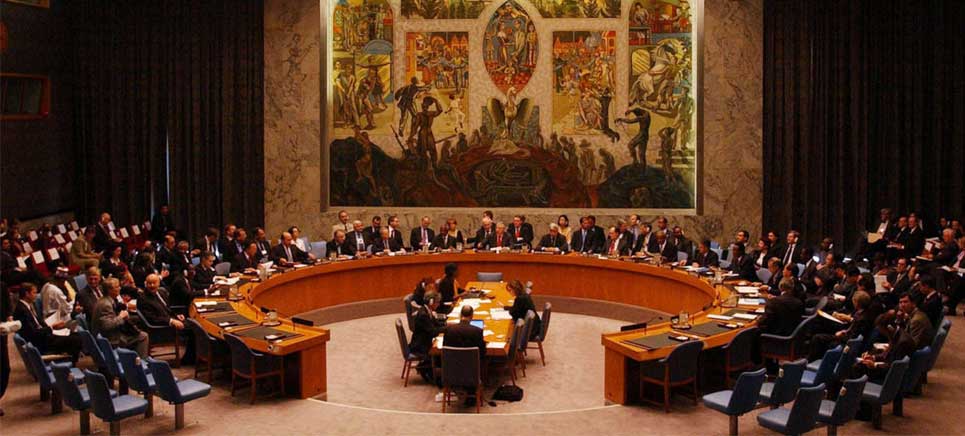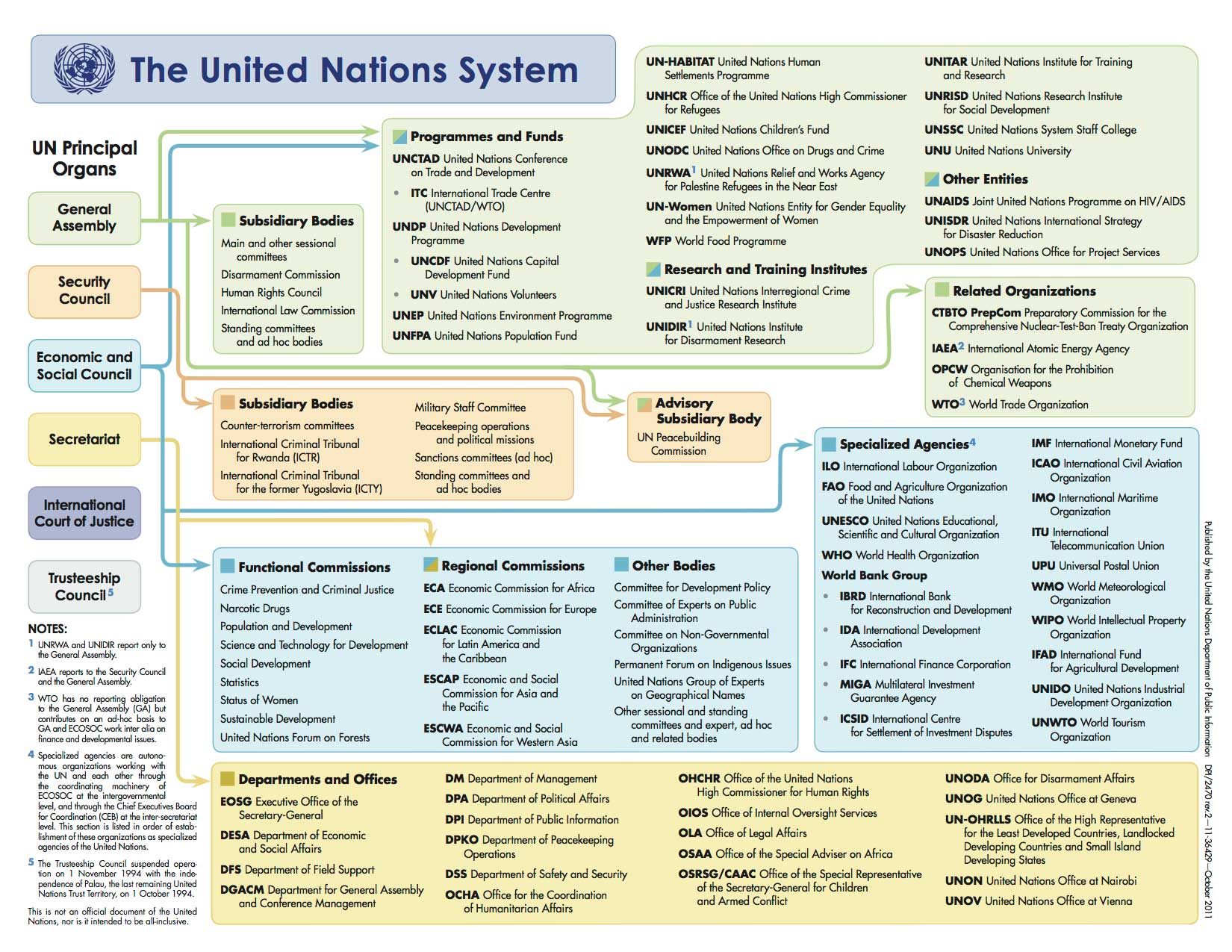United Nations (UN), the world’s leading international organization, strives to establish and maintain international peace and cooperation. Following the World War-II, the UN was founded in the year 1945. It was the second such organization formed with an intention to avoid future wars. First such organization was the League of Nations (1920).
The United Nations system was initially based on six principal organs:
- The General Assembly
- The Security Council
- The Secretariat
- The Economic and Social Council (ECOSOC)
- The International Court of Justice
- The Trusteeship Council (Inactive Status)
Out of these six main organs, the Trusteeship Council suspended its functions in November 1994. Therefore, at present, there are five main organs of the United Nations. Four out of these five principal organs are headquartered in New York (United States of America). Only the International Court of Justice has its headquarter in Hague (Netherlands). Let’s learn about these parts of the UN system in details.
The General Assembly
United Nations General Assembly (UNGA) is the main representative organ of the United Nations. In a way, it is considered as the first branch of the UN system which deals with the policy-making. It provides a unique platform for multilateral dialogues and discussions on issues of international importance. Important decisions and resolutions such as UN Budget, admission of a new member, and peace and security, etc. require special 2/3rd majority of the General Assembly. For all cases other than the specified one for a special majority, a simple majority of the General Assembly is sufficient.
- Composition: UNGA comprises of all 193 UN Member Nations.
- Formed: 1945
- First Session: It was convened on 10 January 1946.
- Representation: It is the only UN organ having equal representation of all member states. Article 9 of the UN Charter guarantees a seat in the General Assembly to each UN Member Nation.
- Headquarters: New York (United States of America).
- Provisions (under the UN Charter): Chapter IV of the UN Charter deals with UNGA including its composition, functions, powers, voting, and procedures
- Sessions: Regular Session of the General Assembly is held annually. It commences from the third Tuesday of September. The day is counted from the first week that contains at least one working day. At the beginning date of each session, a closing date for that session is fixed. Apart from the regular session, UNGA has been bestowed with the power to convene a special or emergency special session.

Powers and Functions of the United Nations General Assembly
- UN Resolutions are passed through the UNGA. Although these resolutions are generally non-binding in nature, it may have a binding effect if it’s an internal resolution relating to matters like procedures and budget.
- UNGA holds the “power of the purse” with respect to the entire UN system. It is responsible for the UN Budget.
- UNGA is also responsible for the following appointments:
- Secretary-General to the United Nations (Nomination in this regard is received from the Security Council).
- 10 Non-Permanent Members of the Security Council.
- Members of the Economic and Social Council (ECOSOC).
- Judges of the International Court of Justice (with the assent of the Security Council).
- Up to half the members of the Trusteeship Council (now suspended)
The Security Council
The Security Council is the most powerful organ of the UN. It is entrusted with the responsibility of ensuring International Peace and Security. The Security Council initially consisted of 11 Members Nations. Resolutions passed by the United Nations Security Council (UNSC) are generally enforced by the United Nations Peacekeepers.
Permanent Members
Five nations that were very powerful at the time of the establishment of the United Nations were given the status of Permanent Members. The Five Permanent Members of the UNSC are the United States, United Kingdom, Russia, France, and China. These nations continue to hold the position of Permanent Members. One of the most striking features of the permanent membership in the Security Council is the veto power. All the Permanent Members are entrusted with the power to block any resolution by exercising a veto.
Non-permanent members
In the initial years, the Security Council comprised of only six Non-Permanent Member Nations. Later, the number of Non-Permanent Members was increased to 10 through an amendment to the UN Charter in the year 1965. Non-Permanent Members are elected by the UN General Assembly and they hold office for a two years term. A Non-Permanent Member cannot be re-elected immediately upon serving a term.
- Composition: 15 Members (5 Permanent Members & 10 Non-Permanent Members)
- Formed: 1945
- First Session: 17 January 1946
- Representation: While the status of Permanent Members is fixed, Non-Permanent members to the Security Council are elected by the United Nations General Assembly through an election. The election is held by secret ballot. There are no nominations for the Non-Permanent membership.
- Headquarter: New York (United States of America)
- Provisions (Under the UN Charter): Chapter V of the UN Charter
- Sessions: The Security Council meets continually throughout the year. A representative of each Security Council Member Nations is stationed at the UN headquarters.

Powers & Functions of the Security Council
- The primary and most important function of the Security Council is to establish international peace and security.
- It is the Security Council that recommends admission of a new UN member nation to the UNGA.
- The Security Council can enact international sanctions. International sanctions are restrictive measures imposed on any entity that represents a threat to international peace and cooperation.
- The powers bestowed upon the Security Council also include authorizing military actions for ensuring peace.
- The Security Council has been empowered by the UN Charter to investigate an issue that might lead to international disputes. It is also entrusted with the power to recommend appropriate procedures or adjustment methods to tackle any situation that might endanger international peace and security.
Presidency of the UN Security Council
UN Security Council is lead by the presidency of the UN Security Council. It rotates on a monthly basis among the 15 Members of the Security Council. At the very first session of the UNSC, it was decided that the presidency will rotate alphabetically on a monthly basis among the Council members. Thus, Australia became the first nation to hold the presidency of the UNSC.
The Secretariat
UN Secretariat is the executive arm of the United Nations. The Secretary-General to the United Nations is the Chief Administrative Officer of the Secretariat. Being an administrative body, the Secretariat is responsible for setting agenda for other policy-making and deliberative organs of the United Nations like UNGA, UNSC, etc. It is the Secretariat that implements the decisions taken by these deliberative bodies.
- Composition: The UN Secretariat is divided into offices and departments.
- Formed: 1945
- Representation: As of 01 January 2019, there are over 35,000 people from 140 countries employed within the UN Secretariat.
- Headquarter: New York (United States of America)
- Provisions (Under the UN Charter): Chapter XV of the UN Charter
Powers and Functions of the Secretariat
- UN Secretariat is the main source of economic and political analysis for the deliberative organs of the UN. In fact, the operations initiated by the General Assembly or the Security Council are administratively executed by the Secretariat.
- It conducts research and surveys.UN peacekeeping operations are carried out based on the assessments done by the Secretariat.
- The Secretariat is also responsible for conducting political missions.
- All the UN communications to non-state actors (like NGOs, media, etc.) are established through the UN Secretariat.
The Economic and Social Council (ECOSOC)
As the name suggests, ECOSOC is responsible for the direction and coordination of economic and social operations carried out by the United Nations. The extended scope of ECOSOC also includes the environmental, humanitarian, and cultural fields of UN operations. All that together aim towards sustainable development. ECOSOC is the most complex principal organ of the UN system. It has 15 specialized agencies, 8 functional commissions, and 5 regional commissions under its ambit.
Organizations like International Monetory Fund (IMF), United Nations Educational, Scientific and Cultural Organisation (UNESCO), International Labor Organization (ILO), World Health Organization (WHO) and the World Bank come under the ECOSOC.

ECOSOC is a key international platform to formulate policy recommendations and lead the discussion on economic and social issues. Thus, ECOSOC has granted the “consultative status” to over 2500 NGOs all across the world. This ensures the direct participation of these non-state actors into the UN system.
- Composition: ECOSOC consists of 54 Members States. These Member States are elected by UNGA for an overlapping three years term.
- Founded: 1945
- Representation: ECOSOC Seats are allocated by way of equitable geographical rotation of the UN regional groups. Accordingly, the below-mentioned allocation takes place.
- African Group has 14 seats
- Asia-Pacific Group has 11 seats
- Eastern European Group has 6 seats
- Latin American and Caribbean Group has 10 seats
- Western European and Other Groups has 13 seats
- Headquarter: New York (United States)
- Sessions: ECOSOC conducts a 4-week session in the month of July every year (Since 1998).
- Provision (Under the UN Charter): Chapter X of the UN Charter
Responsibilities of the ECOSOC
- Identification of social, economic, environmental, and health-related international issues.
- Encourage full employment, high standards of living, and overall socio-economic progress.
- Support fundamental freedom and universal respect for human rights.
- Promotion of International cultural and educational cooperation.
The International Court of Justice
International Court of Justice (ICJ) is the judicial organ of the United Nations. Dispute settlement between member states is the key role of ICJ. The United Nations also takes advisory opinion from ICJ on international legal issues. However, such opinions are not legally binding in nature. ICJ rulings serve as one of the primary sources of International Law. All Member Nations of the United Nation are party to the ICJ statute. ICJ is the successor of the Permanent Court of International Justice (PCIJ), established in 1920 by the League of Nations.
- Composition: 15 Judges are elected by the UN General Assembly and the Security Council for a term of 9 years.
- Formed: 1945
- Representation: There is an informal understanding related to the representation in ICJ among the members. Seats are accordingly distributed region wise.
- Headquarter: Peace Palace, Hague (Netherlands).
- First Case: United Kingdom approached ICJ against Albania considering incidents in the Corfu Channel.
- Provision (Under the UN Charter): Chapter XIV of the UN Charter
Powers and Functions of the International Court of Justice
- International Court of Justice is often referred to as the World Court. As already mentioned above, there are two types of proceedings which fall under the jurisdiction of ICJ: Contentious cases (dispute settlement between states) and Advisory Proceedings (Legal opinion sought by the UN).
- ICJ only decides an international matter under three circumstances
- Parties are UN Member,
- Among Parties that have accepted the ICJ jurisdiction, and
- Among States that have become parties to ICJ Statute.
- The Judgment of ICJ is binding on parties. No further appeal can be made on such a judgment.
The Trusteeship Council
The Trusteeship Council is one of the principal organs of the United Nations. It has been declared inactive since 1994. The purpose of this council was to administer the UN trust territories. These territories were not self-governing territories under the Trusteeship of the UN. All former trust territories have now attained independence or self-governance. Palau (Pacific Islands) was the last trust territory to become a member state of the United Nations in December 1994.
The Trusteeship Council has fulfilled its mission. As a result, its operations have been suspended since 1994. While it continues to exist on papers under the UN Charter, the future role of this council remains uncertain. A formal elimination of the Trusteeship Council from the UN Charter could be done only through amendment. Thus, the UN has not pursued the same with full force.
- Formed: 1945
- First Session: March 1947
- Suspended: 1994
- Trust Territories: 11 Territories since 1945 ( 7 from Africa & 4 from Oceania)
- Headquarter: New York (United States of America)
- Provisions(Under the UN Charter): Chapter XII & XIII of the UN Charter
Use the citation below to add this article to your bibliography
"UN System: Principal Organs of the United Nations." Dashamlav.com. Web. 12 June 2025. <https://dashamlav.com/united-nations-system-principal-organs-organization/>
Dashamlav.com, "UN System: Principal Organs of the United Nations." Accessed 12 June 2025. https://dashamlav.com/united-nations-system-principal-organs-organization/
"UN System: Principal Organs of the United Nations." (n.d.). Dashamlav.com. Retrieved 12 June 2025 from https://dashamlav.com/united-nations-system-principal-organs-organization/
